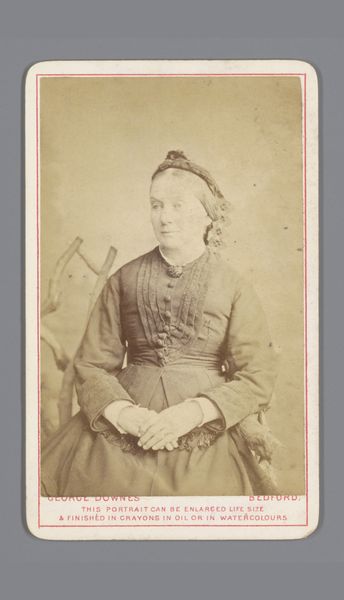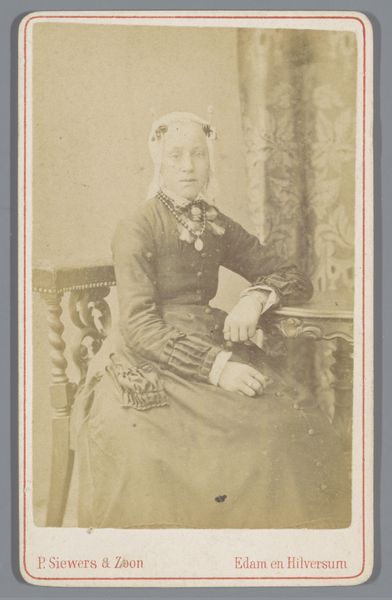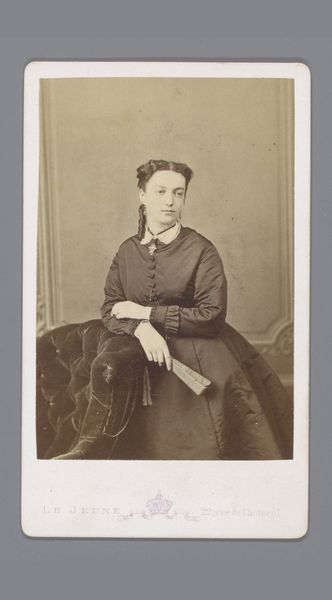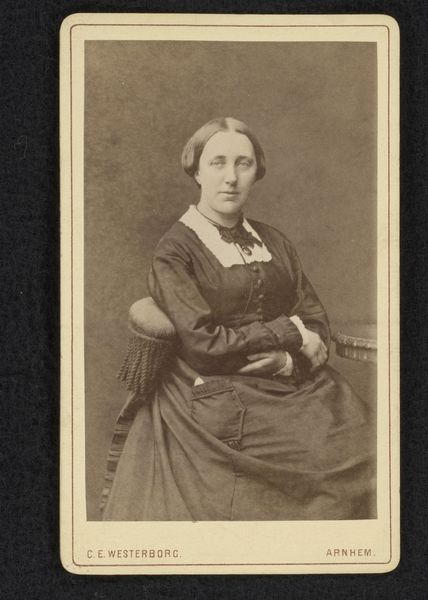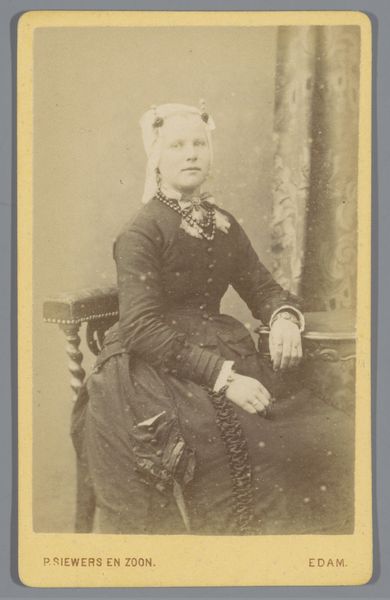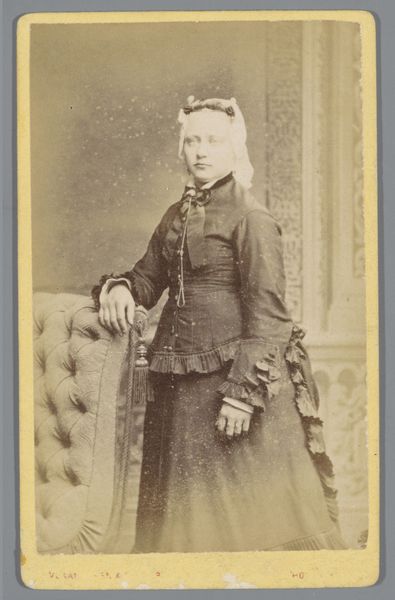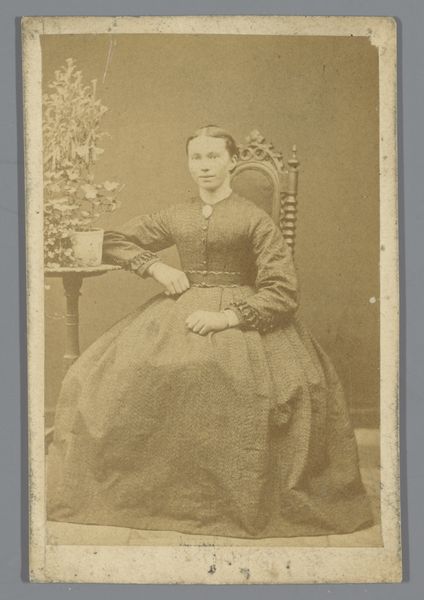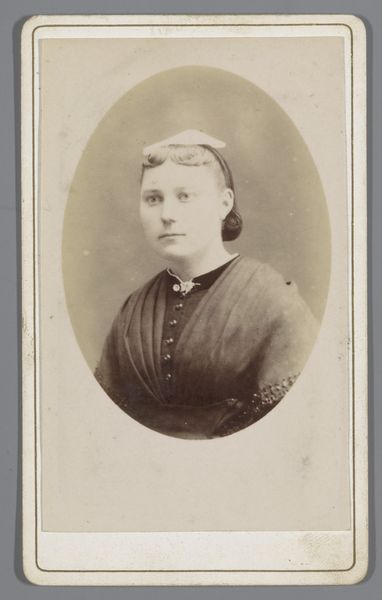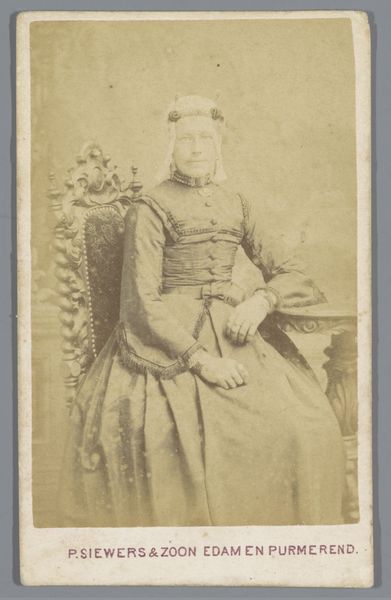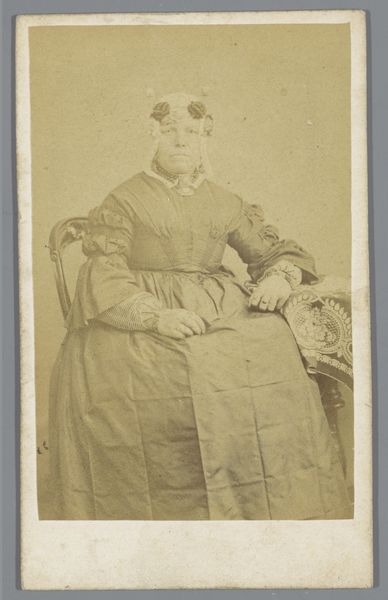
photography, gelatin-silver-print
portrait
photography
gelatin-silver-print
19th century
Dimensions: height 99 mm, width 62 mm
Copyright: Rijks Museum: Open Domain
Curator: This is "Portret van een onbekende vrouw," created sometime between 1872 and 1878 by the photography studio Wilke & Hünerjäger. The medium is a gelatin-silver print, typical for the late 19th century. Editor: The image has an immediate solemn quality to it, almost austere. It reminds me of tintypes found in old family albums. There’s a stark simplicity. Curator: Yes, and you can really appreciate the process here, thinking about how the gelatin emulsion would have been prepared, coated onto the glass plate, exposed in the camera, then developed in a darkroom. Each step requires meticulous craft. Think of the material conditions involved – the availability of silver salts, glass production, the infrastructure of the photography studio itself. Editor: It really speaks to the power dynamics of the time. This woman is unidentified. Was she wealthy, allowing her to access this new technology? Was this image meant for circulation within the family or more widely? It’s almost eerie to look at her and think of the countless stories that are now irretrievable. And who decided her fate was anonymity? Curator: Anonymity, or perhaps, she had very precise thoughts about presentation that are still conveyed even after over a century. And that may connect to why the gelatin-silver process would’ve been important - that it offers stability, reproducibility. It was really mass media waiting to happen. I wonder if Wilke & Hünerjäger used a continuous tone process or relied on retouching, altering the image after the fact. The level of detail indicates high quality materials. Editor: It is a shame we don’t have more information. One can analyze how women were viewed in this era, considering the limitations imposed upon them by patriarchal societal structures. This image then might subtly be an act of resistance – simply existing in a medium generally reserved for the upper classes is already disruptive, given it’s lasting materiality. She knew she would be viewed after her life and gave herself permission to occupy that future viewing. Curator: This dialogue really does highlight the many things you might notice looking into that history and that era of material constraints, like light control and developing agents versus the potential it provided to working class women and beyond for some lasting portraiture. Editor: Exactly, these archival absences really prompt us to fill in gaps to connect this individual to much bigger stories.
Comments
No comments
Be the first to comment and join the conversation on the ultimate creative platform.

